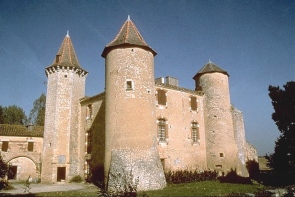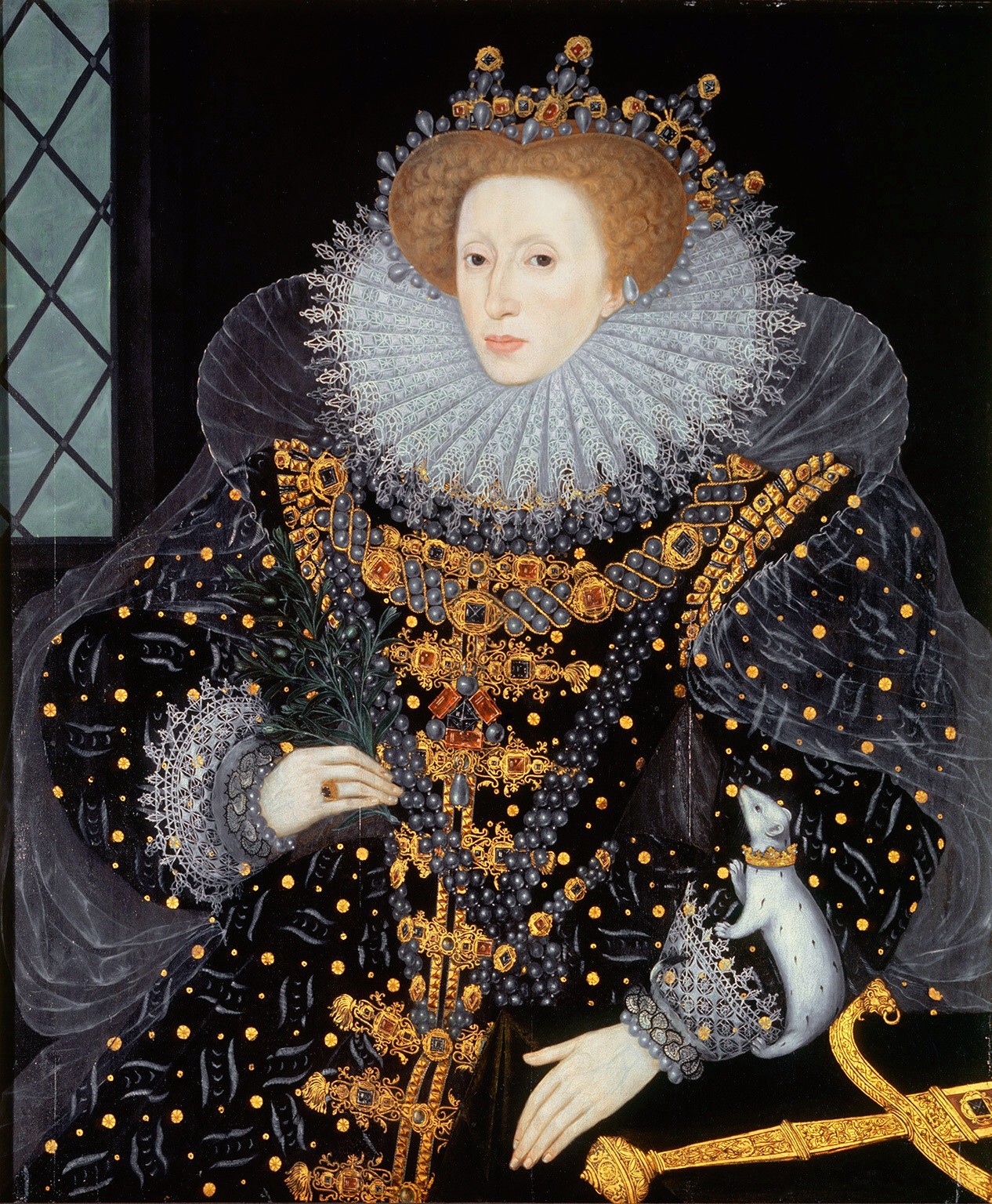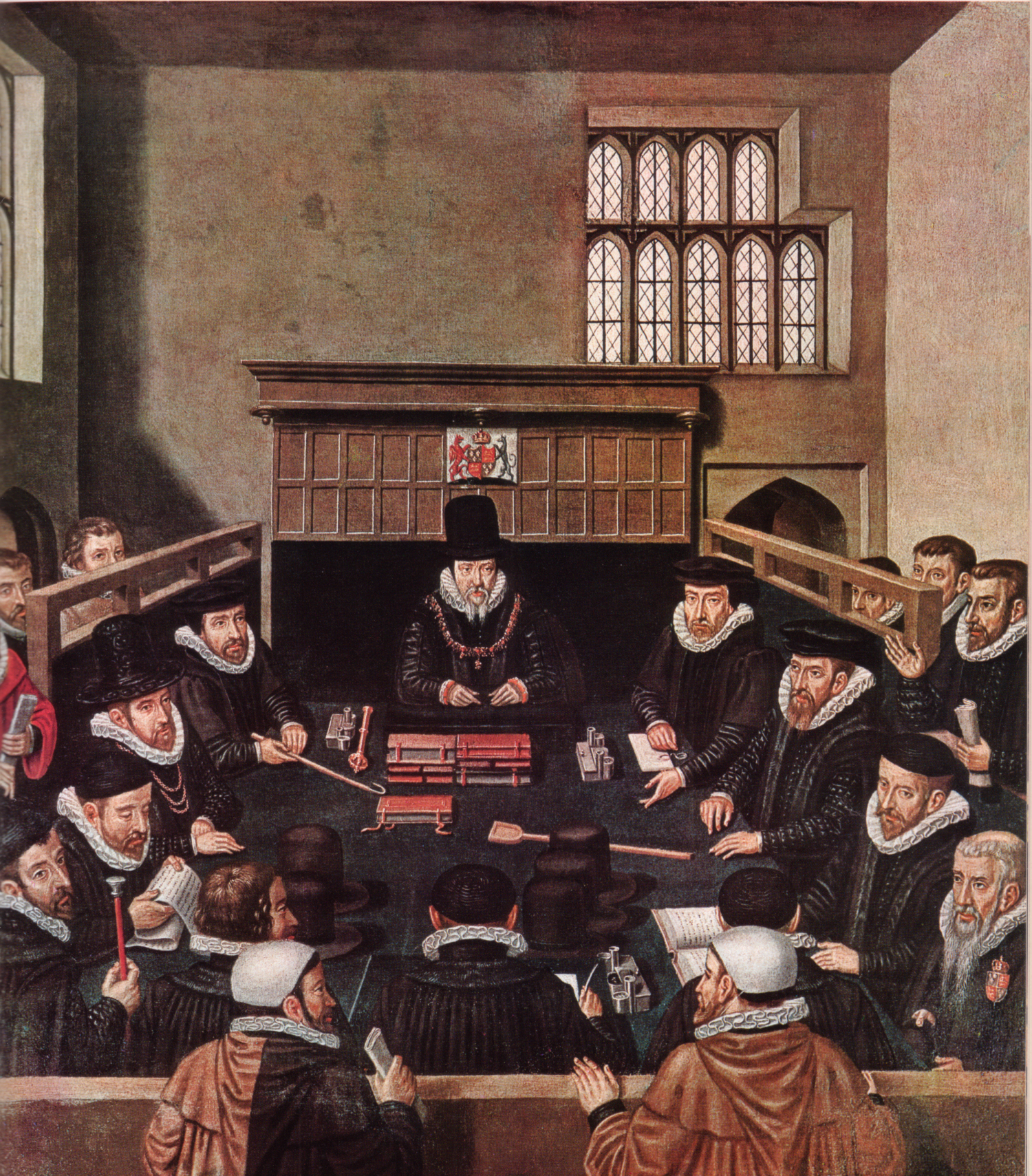|
Thomas Hudson (poet)
Thomas Hudson, (died in or before 1605) was a musician and poet from the north of England present at the Scottish court of King James VI at the end of the 16th century. Both he and his brother Robert Hudson were members of the Castalian Band, a group of court poets and musicians headed by the King in the 1580s and 1590s. William Hudson taught King James to dance, and another brother, James Hudson, became involved in diplomacy between England and Scotland. Viola players The Hudson brothers came to Scotland in the retinue of Lord Darnley, and seem to have been connected with Anthony Standen, an English servant of Darnley. The brothers joined the household of the infant James VI of Scotland at Stirling Castle as viola players and were listed in the household on 10 March 1568 as "Mekill igThomas Hudson, Robert Hudson, James Hudson, William Hudson", with their servant William Fowlartoun. The four Hudson brothers were given £50 yearly for their livery clothes, and were allocated a ... [...More Info...] [...Related Items...] OR: [Wikipedia] [Google] [Baidu] |
North Of England
Northern England, or the North of England, refers to the northern part of England and mainly corresponds to the historic counties of Cheshire, Cumberland, Durham, Lancashire, Northumberland, Westmorland and Yorkshire. Officially, it is a grouping of three statistical regions: the North East, the North West, and Yorkshire and the Humber, which had a combined population of 15.5 million at the 2021 census, an area of and 17 cities. Northern England is culturally and economically distinct from both the Midlands and Southern England. The area's northern boundary is the border with Scotland, its western the Irish Sea and a short border with Wales, and its eastern the North Sea. Its southern border is often debated, and there has been controversy in defining what geographies or cultures precisely constitute the 'North of England' — if, indeed, it exists as a coherent entity at all. The region corresponds to the borders of the sub-Roman Brythonic Celtic territory of ... [...More Info...] [...Related Items...] OR: [Wikipedia] [Google] [Baidu] |
Guillaume De Salluste Du Bartas
Guillaume de Salluste du Bartas (, ; 1544, in Monfort – July 1590, in Mauvezin) was a Gascon Huguenot courtier and poet. Trained as a doctor of law, he served in the court of Henri of Navarre for most of his career. Du Bartas was celebrated across sixteenth- and seventeenth-century Europe for his divine poetry, particularly ''L'Uranie ''(1574), ''Judit ''(1574), ''La Sepmaine; ou, Creation du monde'' (1578), and ''La Seconde Semaine'' (1584-1603). Life Relatively little is known about du Bartas’ life. Guillaume Sallustre was born in 1544 to a family of wealthy merchants in Montfort (in the Armagnac region). His family name later became ‘Salluste’ rather than 'Sallustre', perhaps to invite comparison with the Roman historian Sallust. He was possibly a student at College de Guyenne in Bordeaux (Michel de Montaigne’s school), and studied law in Toulouse under Jacques Cujas; he became a doctor of law in 1567 and a judge in Montfort in 1571. He gained the lordship of ... [...More Info...] [...Related Items...] OR: [Wikipedia] [Google] [Baidu] |
Baptist Hicks, 1st Viscount Campden
Baptist Hicks, 1st Viscount Campden (1551 – 18 October 1629) was an English cloth merchant and politician who sat in the House of Commons of England, House of Commons between 1621 and 1628. King James I knighted Hicks in 1603 and in 1620 he was created a baronet. He was MP for Tavistock in the House of Commons of 1621 and for Tewkesbury in the parliaments of 1624, 1625, 1626 and 1628. In 1628, he was elevated to the peerage as Baron Hicks, of Ilmington in the County of Warwick, and Viscount Campden, of Campden in the County of Gloucester, with remainder to his son-in-law, Edward Noel, husband of his daughter Juliana. Early life Hicks was the youngest of six sons born to Robert and Julian Penn, Juliana Hicks, and the grandson of John Hicks of Tortworth. His father died while Baptist was only a child. His mother was a moneylender and he was one of three sons who survived childhood. The others were Clement and Michael Hickes. Baptist Hicks matriculated at Trinity College, Camb ... [...More Info...] [...Related Items...] OR: [Wikipedia] [Google] [Baidu] |
Robert Jousie
Robert Jousie (or Joussie or Jowsie or Jossie; died 1626) was a Scottish textile merchant, financier, and courtier. He was involved in the collection and administration of the English subsidy of James VI. Jousie supplied fabrics used at the baptism of Prince Henry (1594), and for the clothes of Prince Henry and Princess Elizabeth. Life Jousie was a cloth merchant based in Edinburgh with a house on the High Street or Royal Mile. His father James Jousie was also a textile merchant who supplied fabrics to tailors, and was paid £26-4s-7d Scots by the royal treasurer in December 1578. James Jousie died on 28 December 1578. Robert Jousie became an exclusive supplier of fabrics to James VI of Scotland and Anne of Denmark. His accounts for fabrics supplied to the king and queen survive in the National Archives of Scotland, and have been quoted by historians including Hugo Arnot, who noted that James VI bought ostrich feathers and beaver hats. The record includes masque costumes for ... [...More Info...] [...Related Items...] OR: [Wikipedia] [Google] [Baidu] |
English Subsidy Of James VI
Queen Elizabeth I of England paid a subsidy to King James VI of Scotland from 1586 to 1602. This enabled her to influence James by delaying or deferring payments to his diplomats in London. Records survive of the yearly amounts, and details of the expenditure in some years. A large proportion of the money in 1589 was spent on the Entry and coronation of Anne of Denmark, royal wedding and in subsequent years on the wardrobe of Anne of Denmark, royal wardrobe of James and Anne of Denmark. Some royal expenses were met by Anne of Denmark's dowry, which was known as the "tocher". The regular incomes of the Scottish crown were feudal rents, customs, and "compositions" charged on grants of land. Accounts for royal incomes and payments survive as the Exchequer Rolls of Scotland, exchequer rolls and Treasurer of Scotland, lord treasurer's accounts and have been published as historical sources. A gift with consequences The sum of money was an annual gift from the English queen Elizabeth I ... [...More Info...] [...Related Items...] OR: [Wikipedia] [Google] [Baidu] |
Elizabeth I
Elizabeth I (7 September 153324 March 1603) was List of English monarchs, Queen of England and List of Irish monarchs, Ireland from 17 November 1558 until her death in 1603. She was the last and longest reigning monarch of the House of Tudor. Her eventful reign, and its effect on history and culture, gave name to the Elizabethan era. Elizabeth was the only surviving child of Henry VIII and his second wife, Anne Boleyn. When Elizabeth was two years old, her parents' marriage was annulled, her mother was executed, and Elizabeth was declared royal bastard, illegitimate. Henry Third Succession Act 1543, restored her to the line of succession when she was 10. After Henry's death in 1547, Elizabeth's younger half-brother Edward VI ruled until his own death in 1553, bequeathing the crown to a Protestant cousin, Lady Jane Grey, and ignoring the claims of his two half-sisters, Mary I of England, Mary and Elizabeth, despite statutes to the contrary. Edward's will was quickly set aside ... [...More Info...] [...Related Items...] OR: [Wikipedia] [Google] [Baidu] |
William Cecil, 1st Baron Burghley
William Cecil, 1st Baron Burghley (13 September 15204 August 1598), was an English statesman, the chief adviser of Elizabeth I, Queen Elizabeth I for most of her reign, twice Secretary of State (England), Secretary of State (1550–1553 and 1558–1572) and Lord High Treasurer from 1572. In his description in the Encyclopædia Britannica Eleventh Edition, ''Encyclopædia Britannica'' Eleventh Edition, Albert Pollard, A.F. Pollard wrote, "From 1558 for forty years the biography of Cecil is almost indistinguishable from that of Elizabeth and from the history of England." Cecil set as the main goal of English policy the creation of a united and Protestant British Isles. His methods were to complete the control of Ireland, and to forge an alliance with Scotland. Protection from invasion required a powerful Royal Navy. While he was not fully successful, his successors agreed with his goals. In 1587, Cecil persuaded the Queen to order the Execution of Mary, Queen of Scots, executio ... [...More Info...] [...Related Items...] OR: [Wikipedia] [Google] [Baidu] |
John Skene, Lord Curriehill
Sir John Skene, Lord Curriehill (1549–1617) was a Scottish people, Scottish prosecutor, ambassador, and judge. He was involved in the negotiations for the marriage of James VI and I, James VI and Anne of Denmark. He was regent in St Mary's College, St Andrews from 1564 to 1565 and became an Faculty of Advocates, advocate in 1575. Life He was born at Curriehill Castle south of Edinburgh in 1549. He was the sixth son of James Skene of Glencorse, Wester Corse (b.1505) and Janet Lumsden. The physician Gilbert Skene was an elder brother. Their lands were at Bandodle or Wester Corse, a manor in Aberdeenshire. In his own writings he mentions his travels, describing the appearance of a travelling salesman in Kraków in 1569. The writer Thomas Dempster mentions Skene's travels in the countries of Northern Europe and his fluency in their languages. James Melville of Halhill said he could give long speeches in Latin, and was "good, true, and stout". Skene enrolled or matriculated at ... [...More Info...] [...Related Items...] OR: [Wikipedia] [Google] [Baidu] |
Anne Of Denmark
Anne of Denmark (; 12 December 1574 – 2 March 1619) was the wife of King James VI and I. She was List of Scottish royal consorts, Queen of Scotland from their marriage on 20 August 1589 and List of English royal consorts, Queen of England and Ireland from the union of the Scottish and English crowns on 24 March 1603 until Death and funeral of Anne of Denmark, her death in 1619. The second daughter of King Frederick II of Denmark and Sophie of Mecklenburg-Güstrow, Anne married James at age 14. They had three children who survived infancy: Henry Frederick, Prince of Wales, who predeceased his parents; Elizabeth Stuart, Queen of Bohemia, Princess Elizabeth, who became Queen of Bohemia; and James's future successor, Charles I of England, Charles I. Anne demonstrated an independent streak and a willingness to use factional Scottish politics in her conflicts with James over the custody of Prince Henry and his treatment of her friend Barbara Ruthven, Beatrix Ruthven. Anne app ... [...More Info...] [...Related Items...] OR: [Wikipedia] [Google] [Baidu] |
George Nicholson (diplomat)
George Nicholson or Nicolson (floruit 1577–1612), was an English diplomat in Scotland. Resident in Scotland George Nicholson was not an ambassador in Scotland but a resident agent. He had been a servant of Robert Bowes (diplomat), Robert Bowes for many years. Nicholson, Christopher Shepherdson, and William Wood were mentioned as servants of Bowes in the will of Isotta de Canonici, the wife of the Italian writer Giacomo Castelvetro, who died in Edinburgh in 1594. Bowes became unwell in 1597 and intended Nicholson should take his place. On 6 December 1597 Elizabeth I of England, Queen Elizabeth of England wrote a letter of accreditation for Nicholson as the English resident, to be delivered to King James VI of Scotland. Nicholson was to get 13s-4d per day and the help of the Governor of Berwick-upon-Tweed to convey his letters. His couriers included Jarret Storrie, a member of the Berwick garrison. Nicholson was soon treated as an ambassador in all but name. Most of his letters w ... [...More Info...] [...Related Items...] OR: [Wikipedia] [Google] [Baidu] |
St Benet Gracechurch
St Benet Gracechurch (or Grass Church) was a parish church in the City of London. First recorded in the 11th century, it was destroyed in the Great Fire of London of 1666 and rebuilt by the office of Sir Christopher Wren. The church was demolished in 1868. Location The church was in Bridge (City of London ward), Bridge ward, on the corner of Fenchurch Street and Gracechurch Street. History Dedication ''St Benet'' is short for 'St Benedict', and St Benet Gracechurch was one of four churches in pre-Great Fire of London, Fire London dedicated to St Benedict of Nursia, the 6th-century founder of Western monasticism. ''Gracechurch'' meant 'Grass Church', referring, according to Gerald Cobb, to the site of a hay market nearby. Middle Ages The earliest surviving reference to the church is in the 1053 Charter of Brihtmaer conveying a church in Gracechurch Street to Christ Church, Canterbury. The dedication to St Benedict is first recorded during the reign of Henry III of England, Hen ... [...More Info...] [...Related Items...] OR: [Wikipedia] [Google] [Baidu] |
Gracechurch Street
Gracechurch Street is a main road in the City of London, the historic and financial centre of London, England, which is designated the A1213. It is home to a number of shops, restaurants, and offices and has an entrance to Leadenhall Market, a covered market dating from the 14th century. Overview At its southern end, the street begins near Christopher Wren's Monument to the Great Fire of London, at a junction with King William Street, Eastcheap and Cannon Street. Heading north, it crosses Lombard Street and Fenchurch Street, and continues forward into Bishopsgate, which marks the start of the A10 route to King's Lynn. Leadenhall Market, a covered market dating from the 14th century and a Grade II* listed structure since 1972, is the street's most famous attraction. The closest mainline railway station is Fenchurch Street and the nearest London Underground station is Monument. The postcode for the street is EC3V. History The word 'Gracechurch' derives from ''Garsch ... [...More Info...] [...Related Items...] OR: [Wikipedia] [Google] [Baidu] |





